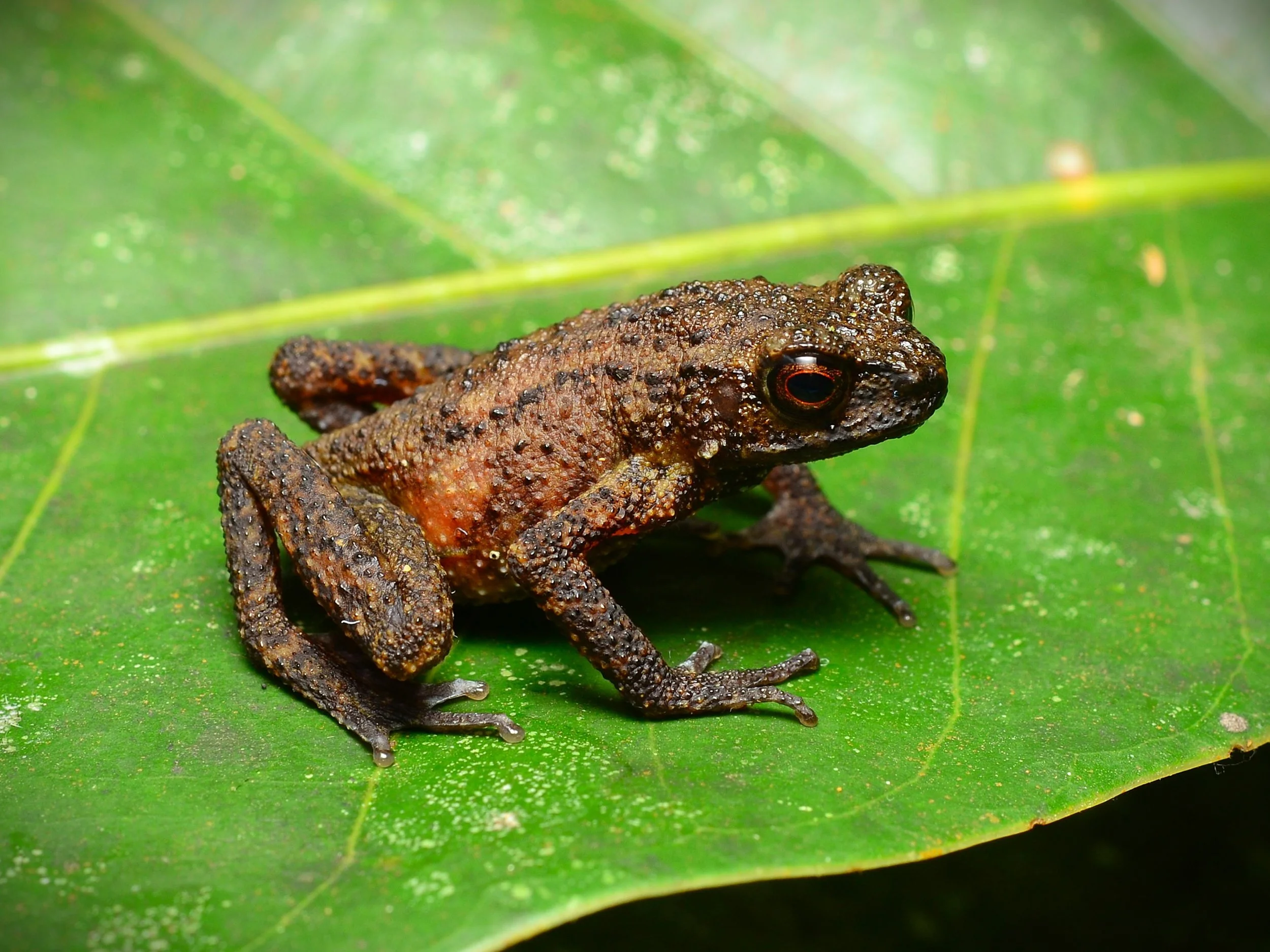Rediscovery of Sabah’s endemic toad: a conservation milestone, hampered by landslides
8 October 2024
Mesilau Stream Toad. Photo credit: Evan S.H. Quah
We were thrilled when earlier this year, a significant breakthrough was made in one of the projects funded by ASAP’s Species Conservation Fund. After a long search, the dedicated team from the Institute for Tropical Biology and Conservation at the Universiti Malaysia Sabah confirmed the presence of Mesilau Stream Toad in Kinabalu, Sabah. This was particularly exciting given previous concerns that an earthquake in 2015 had destroyed the population of this endemic species.
“For the longest time, it felt like we were chasing a ghost until we rediscovered the very first specimen. This toad is an integral part of Sabah’s natural heritage, and we feel great pride in knowing that we have made our mark in the conservation of this endemic species that will continue to be known by future generations of Sabahans and the world.”
The team went on to complete an expedition to a second location, Mount Trusmadi, where they were delighted to discover another population of the species. This exciting result showed that the species exists in other, higher elevation areas of Sabah and gives a promising insight into its potential range.
Members of the team at Mesilau Cave. Photo credit: Evan S.H. Quah
The significance of the rediscovery
This particular species of toad is native to Sabah and has a unique place in the region’s ecosystem. Once thought to be abundant in Kinabalu National Park, an earthquake in 2015 and subsequent landslides decimated its population.
Its rediscovery after years of absence from scientific records is not only a triumph for conservation efforts but also highlights the rich biodiversity of Sabah’s montane regions. Endemic species like this toad play critical roles in maintaining ecological balance and are often indicators of environmental health. Their presence (or absence) can provide insight into broader environmental changes.
For many years, this species was believed to be potentially extinct or in severe decline, making this rediscovery an invaluable contribution to understanding its current status.
Mesilau Stream Toad. Photo credit: Evan S.H. Quah
Rediscovery hampered by landslides
In June and July 2024, shortly after the rediscovery of the endemic toad, landslides occurred in Sabah following heavy rain. Sadly, these landslides destroyed the quadrats that had been set up to monitor the toad’s tadpoles, marking a major setback for the project. The fallen debris also changed the course of the river and made the water silted, throwing the rediscovery celebrations up in the air.
Next steps in the project
With the rediscovery marking a major milestone, followed shortly by major setbacks due to the landslides, the project has been adapted to better understand the new status and the next steps needed to protect the species. The process of renewing their permit is underway, with plans to continue monitoring efforts at Mesilau to gather vital ecological data. This data will be used to understand the species’ habitat preferences, population size, and threats it faces in its natural environment. The information collected will be crucial for developing targeted conservation strategies to protect this species in the long term.
Counting tadpoles along Mesilau River. Photo credit: Evan S.H. Quah
ASAP’s role in conservation
At ASAP, we are committed to supporting projects that focus on species that are often overlooked yet critically endangered. This rediscovery is a testament to the importance of collaboration and long-term commitment to conservation work. By funding projects like this, ASAP ensures that local organisations have the resources needed to carry out essential conservation work in challenging terrains, where success is never guaranteed but always pursued with passion and resilience.
ASAP will continue to champion projects that safeguard Southeast Asia’s most threatened species, ensuring that these incredible natural wonders are preserved for future generations. Stay tuned for more updates as the team continues its important work!
This project was co-funded with Synchronicity Earth.





